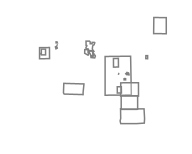2024
Type of resources
Topics
Keywords
Contact for the resource
Provided by
Years
Formats
Representation types
Update frequencies
status
Scale
-

This vector file contains the location of reprocessed surveys and their acquisition parameters. These reprocessed surveys are from airborne geophysical surveys that have been submitted to the NSW government by exploration and mining companies. They have been publicly released under the NSW Mining Act 1992.
-
Please view Matthews and Sheldon (2024) for full description and instructions: Contact Sam at samuel.matthews@regional.nsw.gov.au if you have any difficulty accessing the paper.
-
A subset of the NSW Drillholes dataset focused specifically on Cobar.
-

The NSW Seamless Geology Project was originally a five-year initiative of the Geological Survey of New South Wales which commenced in late 2013 and aimed to provide a statewide compilation of the best available digital geological mapping data in an internally consistent format. The overarching aims of the NSW Seamless Geology Project were to: (i) compile the different original scales, formats and rock unit naming conventions into a consistent, statewide format; (ii) edge-match the geology across existing map sheets; and (iii) interpret the basement geology under cover. The resulting geodatabase comprises a series of layers which include: (i) solid basement geology; (ii) cover rocks (defined as undeformed and unmetamorphosed); (iii) Mesozoic igneous rocks; and (iv) Cenozoic sedimentary and igneous rocks. Due to the size of the project, the work was divided into UTM zones, starting in the east with Zone 56, then moving west to Zone 54, and finishing with Zone 55. The western half of Zone 55 was completed in 2018, after which the results were merged with the previously completed Zones to produce version 1 of the NSW Seamless Geology dataset. Completion of this stage saw the end of phase 1 of the Seamless Geology Project, but it is intended that the Seamless Geology dataset will be continually updated and refined as new digital geological mapping data becomes available. Updates to the Seamless Geology dataset generally occur on an annual basis. Version 2.4 is the 6th major update to the NSW Seamless Geology and was released in May 2024. This release includes: a major upgrade to the geological mapping of the Sydney Basin; significant upgrades to the mapping of numerous areas in the Permian-Mesozoic Igneous Province and the Lachlan Orogen (particularly the Cadia Valley, Lake Cowal and Quarry Creek areas); and attribute updates, data additions, and minor error fixes to all layers. NOTE: A substantial amount of overlay, erase and intersect geoprocessing of the original multi-layered Seamless Geology was undertaken to produce the single layer surface NSW Seamless Geology dataset. Due to small tolerance differences between different layers in the Seamless Geology dataset, this has, in some places, created small “sliver” polygons between boundaries common to more than one layer of the original multi-layered NSW Seamless Geology. This is a known issue with the current single layer Seamless Geology dataset and while some attempt has been made to resolve these issues, a number of small “sliver” polygons remain. Users are cautioned to be aware of this problem when using this dataset at high zoom levels (ie. under 1:1,000 scale) and to refer to the full Seamless Geology dataset for clarification.
 NSW Geoscience Metadata
NSW Geoscience Metadata